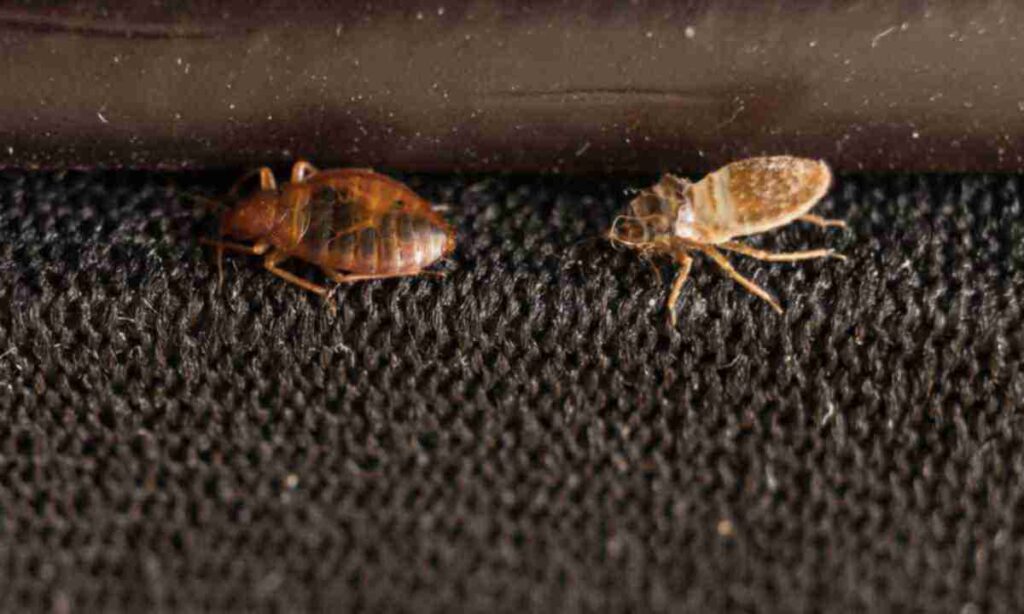If you are worried that you might have bed bugs, you should learn the earliest signs of these nasty pests. Check the sheets and clothing for signs of blood and faecal matter. These bugs explode when you roll over, and their blood gets on your clothing and sheets. You can detect their pheromones and detect them by the smell you can also get our pest inspection services to detect bud bugs. Read on to learn more. Here are some early signs of bed bugs:
Abandoned shell casings
When a bedbug moults, it leaves behind the shell casings. These shells are light-coloured and vary in size. Cast skins indicate a bad infestation. They may be hard to spot in the early stages. However, as an infestation grows and the exoskeletons get lighter, they may become more obvious. If you find abandoned shell casings, be sure to investigate further.
The shells of bedbugs are pale to reddish-brown in colour. They form in different sizes and are deposited at the site of infestation. Shells are easier to detect than actual bed bugs. They will typically live within an eight-foot radius of their host. Abandoned shell casings can be found in furniture, baseboards, and corners of beds. Abandoned shell casings are the first sign of a growing bedbug infestation. These translucent casings are the larval stage of the insect’s life cycle.
Also Read: How to Get Rid of Bed Bugs
Rust-coloured spots
A rust-colored spot in the bedding is an early sign of bed bugs. These bugs feed on the blood of their hosts, so you should look for them on your bedding. They can also leave black or red stains on your sheets. Bed bugs are also known to shed their exoskeletons, which can be found on your bed or mattress. When you see these spots, bedbugs are feeding in the bedding and faeces.
Excretions from bed bugs are rust-colored or red. These stains appear on your bed sheets and clothing, and can also be seen on nearby objects. They shed their exoskeletons after feeding and leave behind faecal matter. Rust-coloured spots may also occur on pillows or clothing. Bed bugs are very difficult to spot without the use of a specialized camera, so it’s important to look for these spots if you suspect you have a problem.
Eggs
The most obvious sign of a bedbug infestation is the presence of bites. The eggs of bedbugs are small, white, clustered, and have a foul smell. They resemble pale poppy seeds and are often found near the base of the bed. You may also notice signs of activity under loose wallpaper near the bed, or in the corners of desks and drawers. You should also look out for dead bugs and shed skins around the bed. Bedbugs live at night, and their colonies hide in seams and crevices.
You can detect bedbug eggs by noticing tiny white spots on the surface of furniture or cushions. The eggs can also be detected by their egg casings, which are husks and shed skins. If you notice these signs, you should take immediate action to get rid of the bedbugs from your home. These insects usually spread their infestation to other areas after hatching, so it’s best to treat the problem as early as possible.
Detecting pheromones
One of the earliest indications of bed bug infestation is the presence of bed bug pheromones. Researchers from the University of California, Riverside, found that the shed skins of the bugs retain these smells. Bed bugs shed their skins as they grow and develop, and shed skins contain up to four different pheromones. When the pheromones from shed skins are present, living bed bugs will settle in the area.
One of the most common ways to detect bed bugs is by the odor of the insects themselves. Bed bugs produce an unpleasant odor called alarm pheromones when they’re disturbed, and the odor is similar to the smell of coriander or berries. However, this odor is not always indicative of bed bug presence. You may also notice an unpleasant odor associated with dead bed bugs.
Detecting welts
Detecting welts as early signs of bed bugs can be challenging. The bite marks are very similar to flea or mosquito bites and can be difficult to differentiate. Depending on the bug species, the bites can be itchy, red, or even blistered. These bites can be painful, and they may last for days or weeks. These bites can cause anxiety, sleeplessness, and skin problems.
The bites are usually clustered in the bite site, but sometimes they are just arranged in a line. Bedbugs are opportunistic feeders and will feed on any exposed skin. Bites are usually found on the hands, face, arms, and neck. You’ll likely also find bite marks on your feet. If you’re unsure of where to look for bites, you can take a picture of them and check if they are clustered or not.

